This post is also available in:
![]() Deutsch
Deutsch
Naqsh-e jahàn square (Meidān Naqsh-e jahān) today also known as Imam square (Meidān-e Emām) and in the past as Shah square (Meidān-e Shāh) is the most beautiful square in Isfahan in Iran. Its original name “Meidān Naqsh-e jahān” means “Square of the Image of the World” and represents the symbol of the power of the Safavid empire. The square, which is considered the largest public square in the world after Beijing’s Tienamen square, is 560 meters long and 160 meters wide and therefore covers an area of almost 9 hectares.
Built by Shah Abbas I the Great at the beginning of the seventeenth century, the square of Isfahan is delimited on all sides by monumental buildings connected together by a series of two-storey arches. A homogeneous urban complex built according to a single, coherent and harmonious plan, Naqsh-e jahàn square became the heart of the Safavid capital. Naqsh-e jahàn square is an impressive testimony to the power of Shah Abbas I and the level of sophistication of social and cultural life achieved in Persia during the Safavid period.
All the architectural elements that outline the square, including the arcades of the shops, are aesthetically very beautiful. Generally they are adorned with a profusion of glazed ceramic tiles with paintings, in which floral ornaments are dominant. After its construction, Isfahan square was mainly used for celebrations. But also for public executions, for playing polo and for troop parades. In short, the royal square of Isfahan was the monument par excellence of Persian socio-cultural life during the Safavid dynasty.
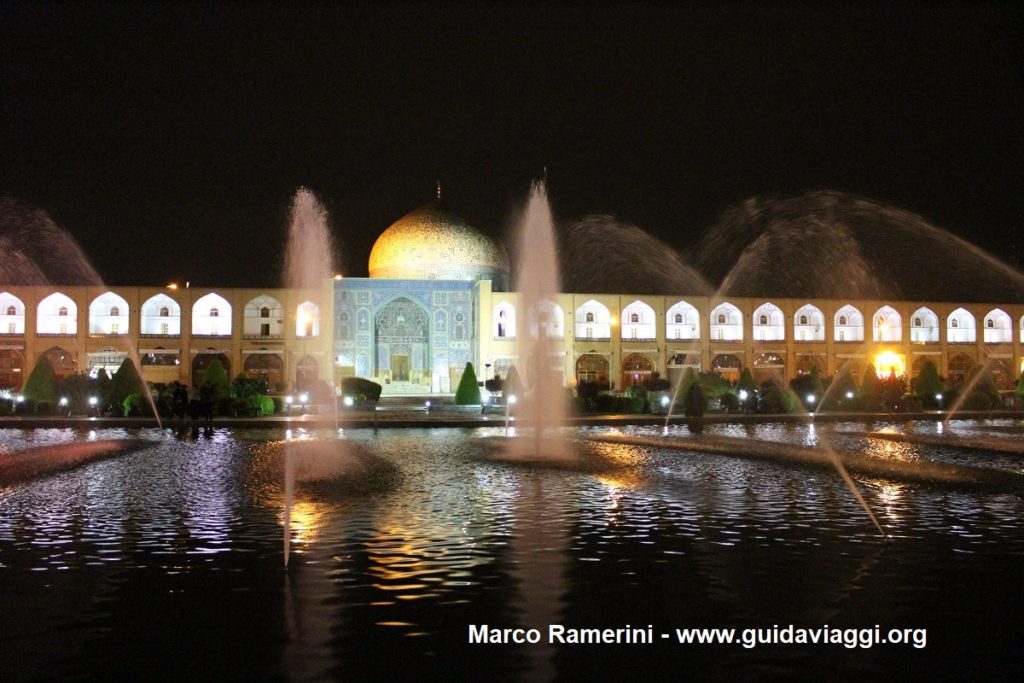
THE MOST BEAUTIFUL SQUARE IN IRAN
Some of the most interesting Safavid-era buildings in Isfahan overlook the square. Including two mosques – the Royal Mosque and the Sheikh Lotf Allah Mosque -, the Royal Palace of Ali-Qapu and the city’s Grand Bazaar. The Royal Mosque – also known as the Shah Mosque or Imam Mosque – is located in the southern part of the square and was built by Shah Abbas I between 1611 and 1629. This mosque represents one of the masterpieces of Persian architecture.
On the east side of the square there is instead the Sheikh Lotf Allah Mosque erected from 1603 and finished in 1619. This mosque has no minarets because it was used exclusively by members of the royal family, but has a truly superb majolica decoration. The Royal Palace of Ali-Qapu is located on the west side of the square opposite the Sheikh Lotf Allah Mosque. Between the two buildings the square is adorned with a large basin with water. In the northern part of the square is the main gate of the Grand Bazaar of Isfahan (Qeyssariyeh gate) which occupies all the arches on the sides of the square and is one of the oldest and largest in the entire Middle East.
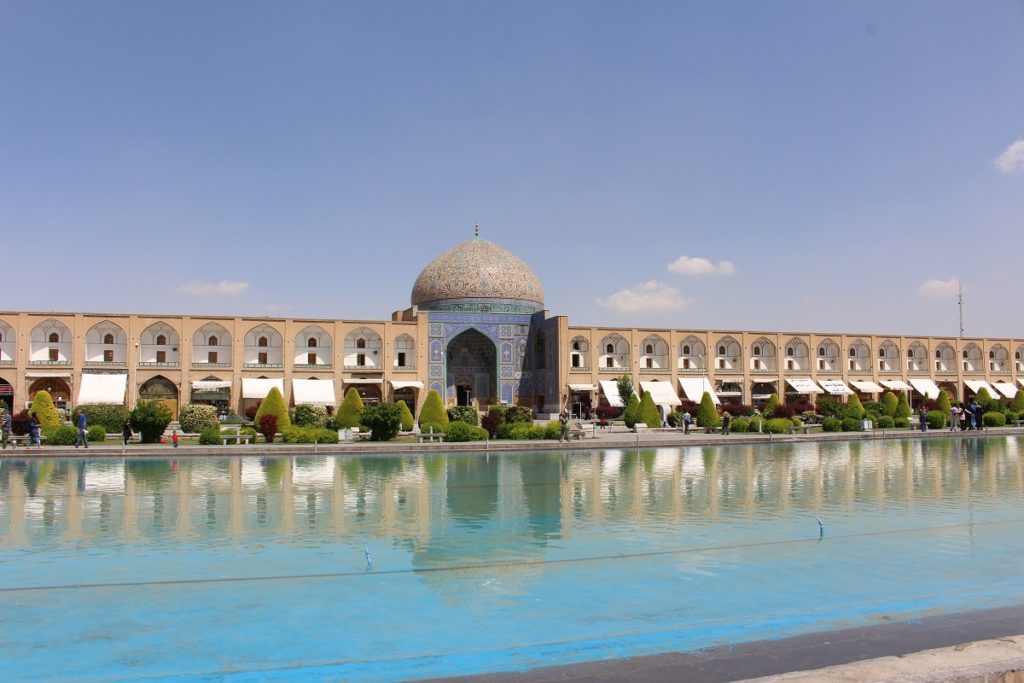
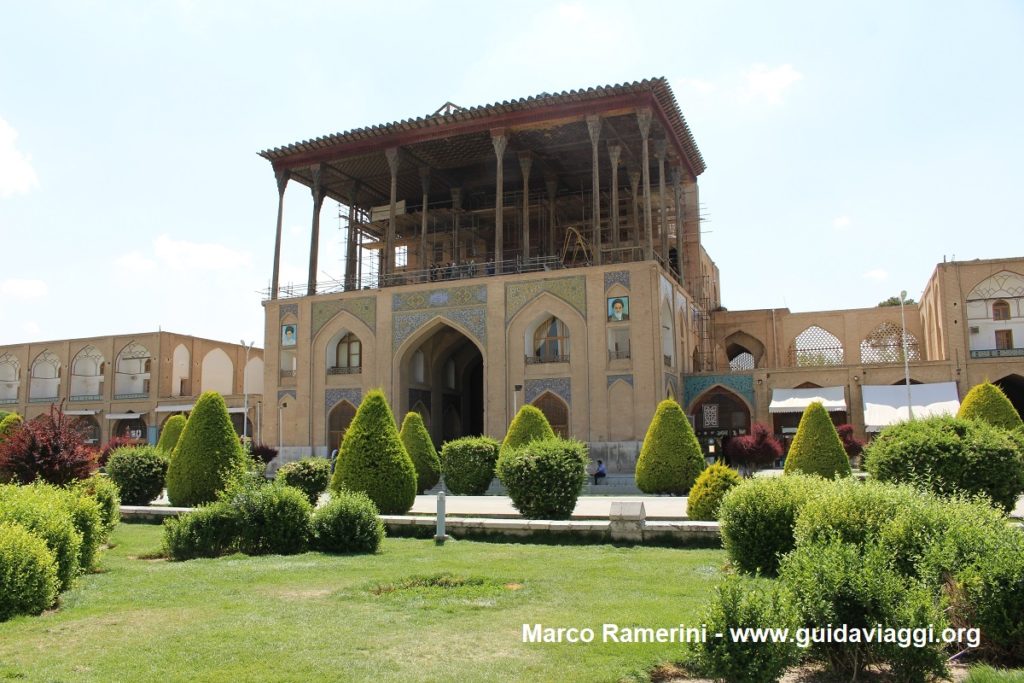
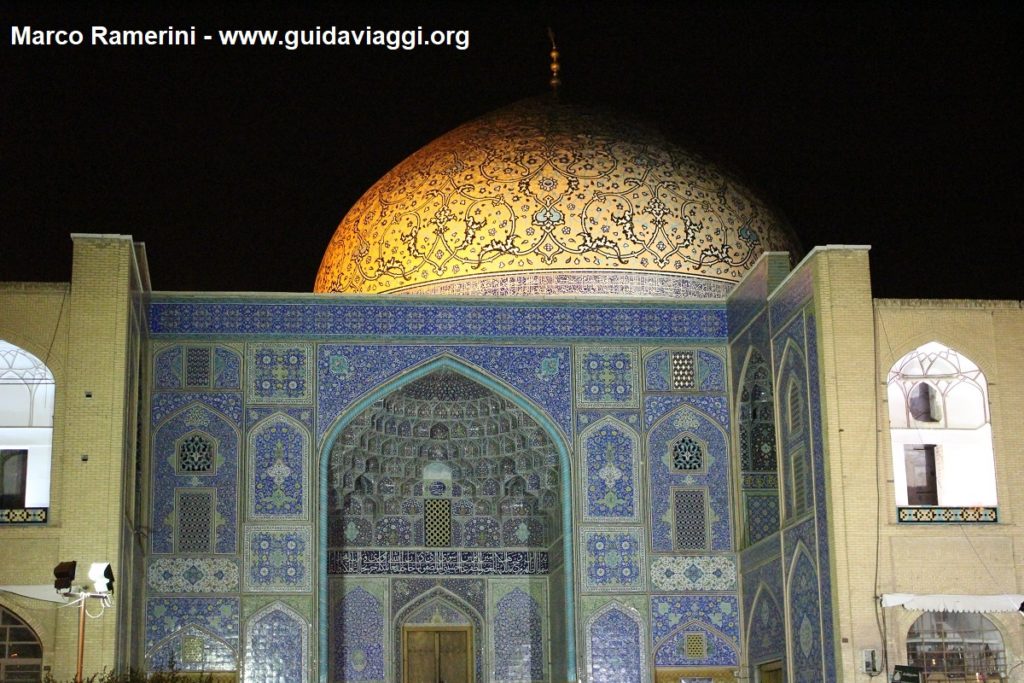
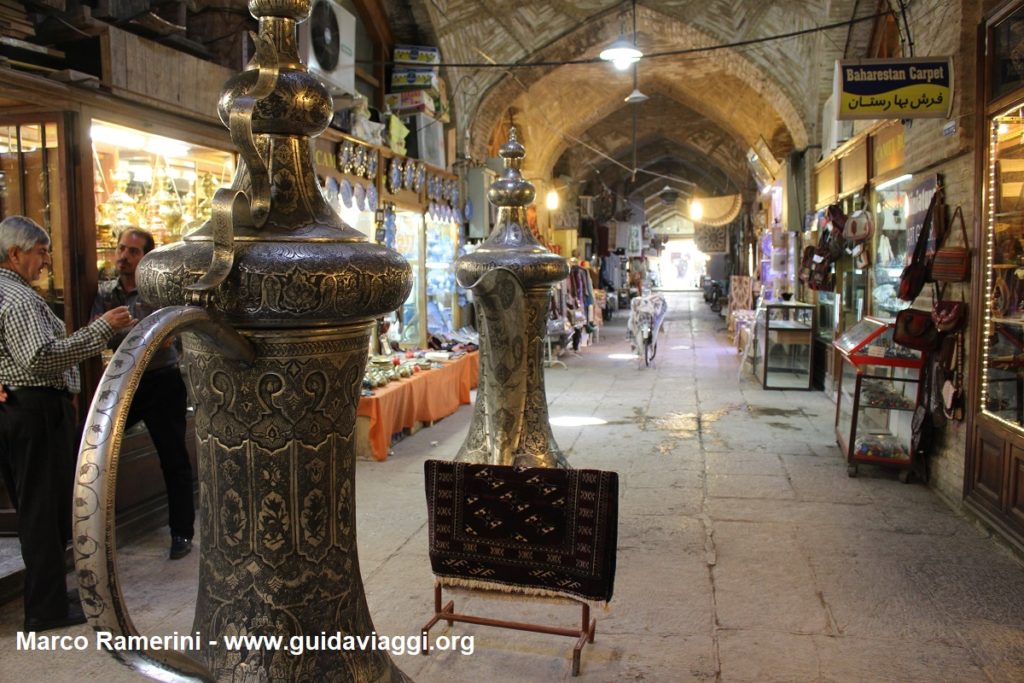
ACCOMMODATION, APARTMENTS, B&B AND HOTELS
Booking.comThis post is also available in:
![]() Deutsch
Deutsch
 Travel Guide Travel Guide to the countries of the world
Travel Guide Travel Guide to the countries of the world

















